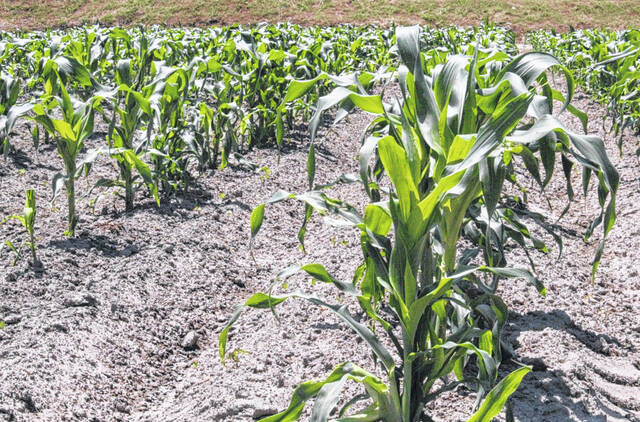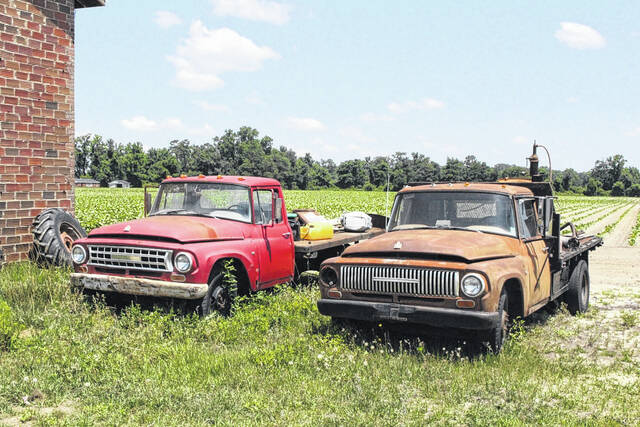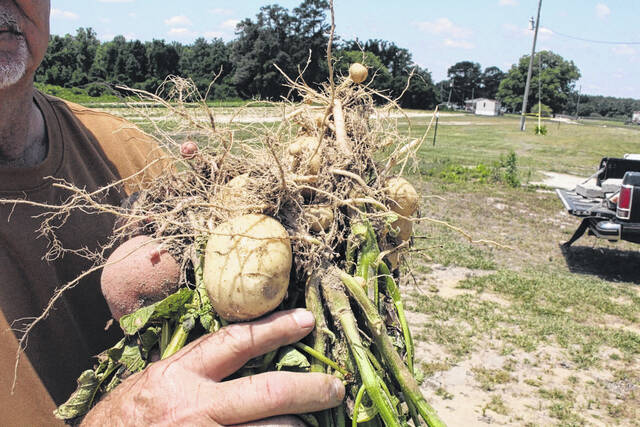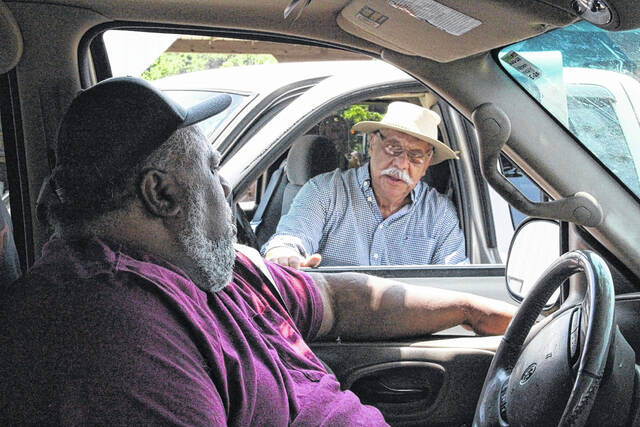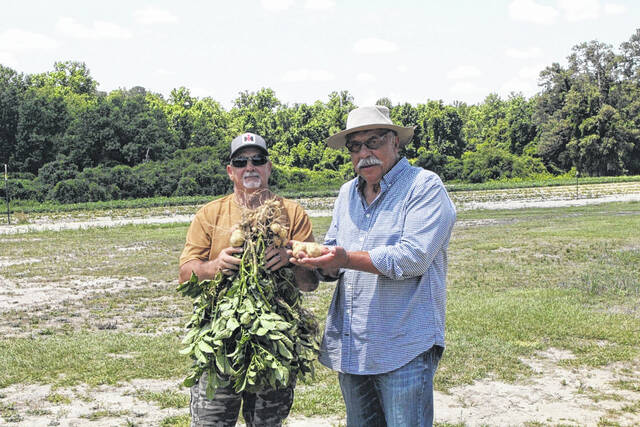Soil produces crops, connections for Coharie
Recovering from a severe 2010 brain injury, Sampson’s Chris Faircloth planted a garden behind the Coharie Tribal Center, one that became an essential part of his healing process. Being in the garden, he said, gave him the opportunity to create a medicine wheel, a Coharie traditional circle representing the four corners of the earth, with a rock in the middle representing the entire universe.
He spent a lot of time in the center of that medicine wheel, allowing the Holy Spirit, he said, to guide his thoughts.
It was from his first planting and his time with the wheel that a much larger idea grew, one that eventually became the first Coharie Community Garden, started in 2014, with a small batch of planters behind the Tribal Center on U.S. 421. That one community garden has now come to occupy between 7.5 and 8.5 acres of land across multiple sites that have become a part of the project. After almost 10 years, the gardens have not only grown in size, with more variety in crops, but have also had a tremendous impact on the tribe as a means of reconnecting to the land and heritage of the Coharie, as the harvests have a role to play in bringing the tribal community closer.
The Community Gardens are covered in rows of squash, potatoes, okra, and more. None of these crops are for sale, true to its billing as a public community garden. The vegetables are free to the tribal community, and there is an organic system of bringing produce to elderly individuals who can’t make it to the garden themselves.
The only product for sale is their Sweet Sorghum, a labor of love for the Coharie tribe here in Sampson. The process starts with chopping the stalks down to split them, then to running the stalks through an old-fashioned cane mill by hand. But, the real artistry comes in the cooking process. The task is arduous, with the responsibility of keeping the steaming correct, judging the perfect temperature and length of time to keep the heat on to create a batch with the perfect texture and sweetness.
The unique Coharie approach to this process is one that has been handed down as a tradition and connects past generations as well as the people of the community today in a common sense of tribal identity, similar to the traditional medicine wheel Chris first created. And the garden that ensued.
“I was sitting right there in that circle,” Faircloth recalled during an interview earlier this week, “when the Holy Spirit came to me … it was revealed what we needed.” Faircloth talked about divisions, at the time, in the tribal community and how the vision came to him to bring the group back together with the help of the garden. At that time, he said, “the community was somewhat fractured, at least compared to my childhood” so he hoped the garden could bring the community together in the same way agriculture and the land once had.
Faircloth talked about the tenets of the gospels, with concepts like ‘do unto others as you would have them do unto you’ as being part of that cycle and balance. His experience reconnecting to the medicine wheel in the garden, with its cultural and communal significance, gave Faircloth the idea that the garden could have a similar effect on a larger scale.
The gardens have come to serve another critical function within the tribe, though, focusing on the connection to their land, their soil. To the tribe, there is a sort of medicinal quality to the soil with the ability to provide healing for the mind and body so long as the volunteer gardeners of the community are “developing the right relationship with the land — if [they] take care of it” as Tribal Administrator Greg Jacobs puts it.
“It is amazing to sit back and see the many ways God puts things into motion,” Jacobs said, “in the sense that the job feels like my calling, so it doesn’t feel like work. I had no desire to have any power, but instead I feel like a servant of the community.”
The garden, Jacobs said, is something he may have help set in motion in some way, yet he feels very strongly that it is not something he should control as it grows organically.
Randy Jacobs, Greg’s cousin, is another example of a return to those roots. Having spent 33 years with Star Communications, his retirement gave him the opportunity to return to farming the same land he spent so much time tending to earlier in life.
“I was working the same land, on the same tractors and equipment I grew up on,” Randy Jacobs said, referring to his time working in the public garden.
The emotions of being back on that land have particular importance.
“Raised up the way I was, with the community being something that brought everybody together, especially, that’s a good feeling — especially this day and time where everybody just sits around on their phones, and they’re all to themselves and independent, but this garden is something that actually, I have found, brings people together.”
The gardens have a much deeper significance than simply providing food, Randy Jacobs attested. Brent Simmons agrees.
With such deep roots in the Coharie tribe and a life full of farming, the idea of allowing some of his land to be used as a plot for the public gardens required no second thought for Simmons.
“I consider myself to be blessed, and I don’t want the land to go unused, especially when I can give that land to those who connect to it,” Simmons said.
Not only does he allow the use of acres that have been in his family for generations, Simmons also allows the use of his equipment and other resources as well. He feels that this project helps to rectify a generational loss of appreciation for the land and work, going back to his grandfather and father, who farmed the same ground and “could tell a man by the way he farmed.”
Simmons, like Jacobs, feels this is a service to the community rather than something to be recognized for. Both are part of creating a sustainable framework for such a project to survive with volunteers and donations.
Variations of the community gardens project have also begun to spread outside of Sampson County, with gardens starting to be planted and take root in other Native American tribal communities.
The significance of the gardens as a means to provide for a community by keeping members fed is of major importance for the Coharie. Still, the impact it has had on the tribe in rekindling a relationship with the land has become a source of nourishment for the community’s own beliefs and traditions, the men agreed.
Reach Jack Tunnell at [email protected]

